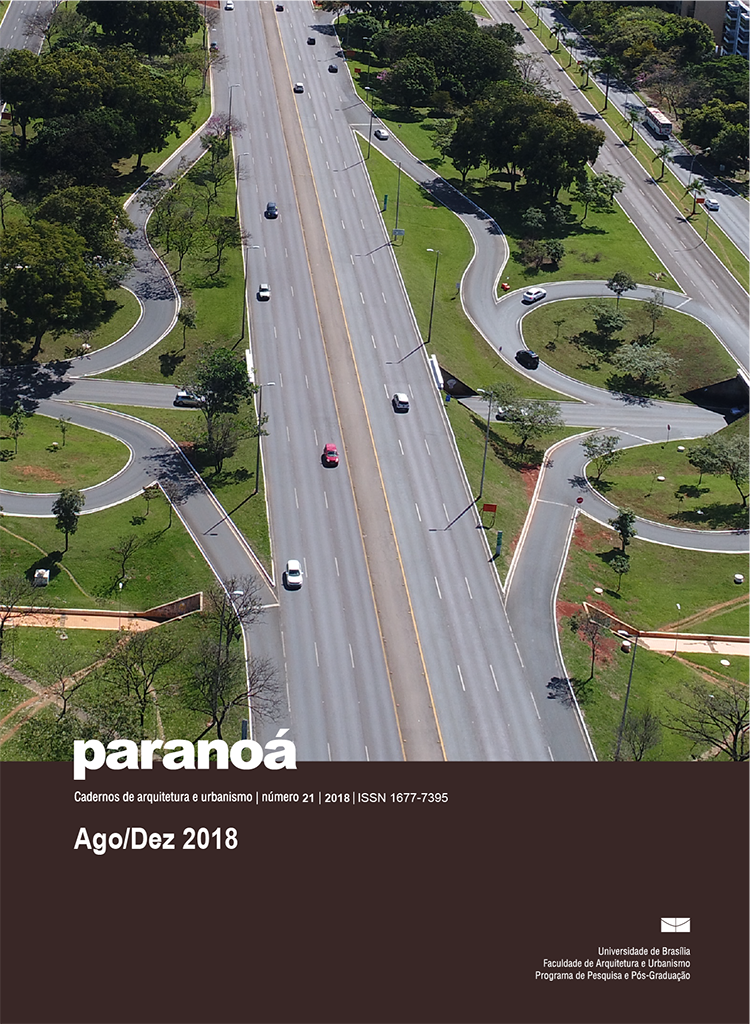Lógica Urbana
o aforamento da propriedade fundiária e a configuração do espaço urbano da cidade de Ribeirão Preto/SP
DOI:
https://doi.org/10.18830/issn.1679-0944.n21.2018.02Keywords:
Emphyteuseum, aforamento o remprazamento, Urban Land, Mechanism of urbanization, Urban configuration, Ribeirão Preto/SPAbstract
Territorial configuration and urban spaces can be interpreted through legal mechanisms. The objective of this article is to analyze and clarify the legal institute of emphyteuse as an agent for urbanization and territorial conformation, with a case study of the role of the Bishop of Ribeirão Preto and the formation of the city of Ribeirão Preto, interior of the state of São Paulo, during the centuries XIX and part of XX. The emphyteuseum is a shared relationship between owners of a particular good or set of these, for this study: urban land. This relationship happens between a perpetual holder who holds the right over a property and a second owner, the emphyteuth, who has the right to enjoy this property. In the territory of São Paulo, the formation of urban nuclei occurred, to a great extent, with the constitution of a religious patrimony, extension of land destined to a saint of devotion of the residents. As a means of income it was usual for the local Church to assess this patrimony. The norms contained in this institute established the urban morphology of many localities, as happened with the city of Ribeirão Preto.
Downloads
References
CÓDIGO CIVIL BRASILEIRO. São Paulo: EDITORA RIDEEL, 1916.
DERNTL, M. F. Método e arte: urbanização e formação territorial na capitania de São Paulo, 1765 ”“ 1811. São Paulo: Alameda.
FARIA, R. S. de. Ribeirão Preto, uma cidade em construção (1895-1930): o moderno discurso da higiene, beleza e disciplina. Campinas, 2003 (Mestrado em História), Universidade Estadual de Campinas.
FREITAS, N. M. B. de. A criação da Diocese de Ribeirão Preto e o governo do primeiro Bispo: D. Alberto José Gonçalves. Franca, 2006 (Mestrado em História), Universidade Paulista ”“ “Júlio de Mesquita Filho”.
LUSTOSA, O. de F. A Presença da Igreja no Brasil. São Paulo: Editora Giro Ltda., 1977.
MONTEIRO, W. de B. Curso de Direito Civil. Direito das Coisas. São Paulo: Edição Saraiva, 1953.
MONTEIRO, C. O domínio da cidade. A propriedade à prova no Direito do Urbanismo. Lisboa: Faculdade de Direito da Universidade de Lisboa, 2010.
PICCINATO JUNIOR, Dirceu. Em chão urbano, o senhorio é santo: urbanização e aforamento de terras no Bispado do Ribeirão Preto entre o Brasil Império e a Primeira República. Campinas, 2016 (Doutorado em Urbanismo), Pontifícia Universidade Católica de Campinas.
ROCHA, M. A. C. da. Instituições de Direito Civil Portuguez. Coimbra: Livraria de J. Augusto Orcel, 1857.
VALADÃO, V. Memória Arquitetônica de Ribeirão Preto (Planejamento urbano e Política de preservação). Franca, 1997 (Mestrado em História), Universidade Estadual Paulista ”“ “Júlio de Mesquita Filho”.
Downloads
Published
How to Cite
Issue
Section
License
Autores que publicam nesta revista concordam com os seguintes termos:
- Autores mantém os direitos autorais e concedem à revista o direito de primeira publicação, com o trabalho simultaneamente licenciado sob a Licença Creative Commons Attribution que permite o compartilhamento do trabalho com reconhecimento da autoria e publicação inicial nesta revista. http://creativecommons.org/licenses/by/4.0
- Autores têm autorização para assumir contratos adicionais separadamente, para distribuição não-exclusiva da versão do trabalho publicada nesta revista (ex.: publicar em repositório institucional ou como capítulo de livro), com reconhecimento de autoria e publicação inicial nesta revista.
- Autores têm permissão e são estimulados a publicar e distribuir seu trabalho online (ex.: em repositórios institucionais ou na sua página pessoal) a qualquer ponto antes ou durante o processo editorial, já que isso pode gerar alterações produtivas, bem como aumentar o impacto e a citação do trabalho publicado (Veja O Efeito do Acesso Livre).















